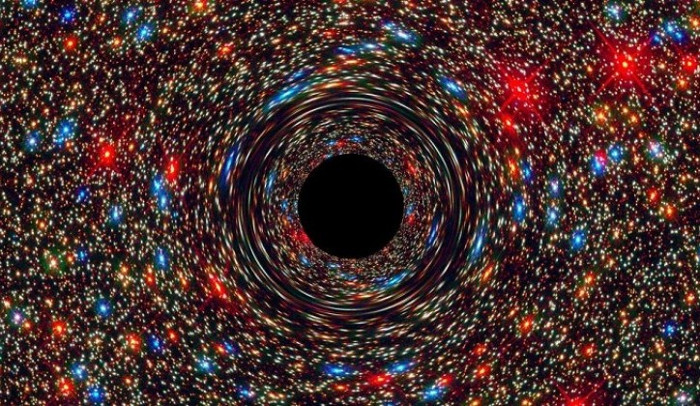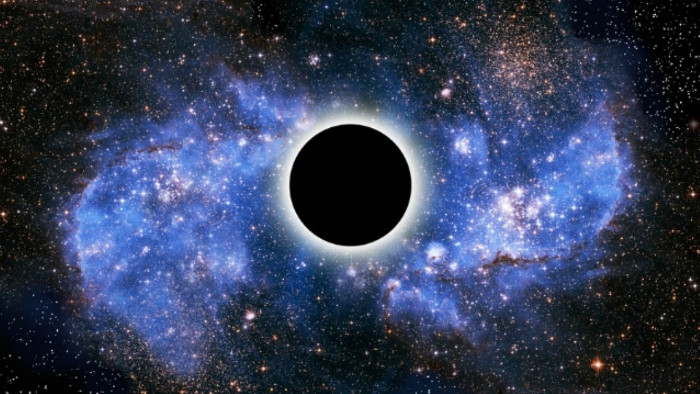The discovery of the
Astronomers have discovered a "black hole" 17 billion times more massive than the Sun.
This black hole is found in galaxy NGC 1600 , in the constellation Eridanus - 200 million light-years from Earth. At the time of the discovery of a new black hole, astronomers were surprised because NGC 1600 belonged to a medium-sized galaxy group, while the former "black holes" tended to grow in dense clusters of galaxies. and bigger scale.
So with this discovery, researchers have to change their view of where the giant black hole resides and how many black holes can exist in the same galaxy, a researcher said.

Simulation image of "super black hole" in the center of galaxy NGC 1600. (Photo: NBC).
"This newly discovered black hole is much larger than the size of the galaxy as our previous calculations , " Chung-Pei Ma, one of the astronomers who discovered the new black hole at the University of California. at Berkeley (California, USA), said.
Ma revealed, her research team found a "super black hole" completely coincidentally. While observing the light spectrum from the NGC 1600 galaxy center, they noticed an unusual point.
"It's like looking at a storm far away. We can't predict how big this storm is. We wonder, what is this black hole?" , Ma commented.
Suspecting the discovery of a giant black hole, members of the research team went to the north of Gemini Observatory in Hawaii (USA) to explore the mass of the new black hole. At the same time, scientists find data from NASA's Hubble Space Telescope on the web.
"Stars are attracted too quickly. This can only be explained with a black hole that has 17 billion times the mass of the Sun in the center," Ma concluded.

The supermassive black hole in the center of the galaxy NGC 4889 has stopped working.(Photo: Universe Today).
However, this is not the most massive " black hole " found. In early February, NASA published a picture taken from Hubble "cosmic black supernova" that had stopped operating 21 billion times the Sun in the galaxy NGC 4889.
- Discovery of Discovery's
- Discovery ship will fly again
- Discovery is about to take off
- Discovery ship boarded the way back
- Discovery of Discovery ship may be postponed until February 2011
- Discovery ship connects to the ISS for the last time
- Discovery's ultimate mission
- Discovery ship connects the perfect ISS Station
- Discovery ship returned to Motherland safely
- Space shuttle Discovery returned to Earth safely
- Discovery ship cracks fuel tank
- 10 most archeological discoveries (1)
 Van Allen's belt and evidence that the Apollo 11 mission to the Moon was myth
Van Allen's belt and evidence that the Apollo 11 mission to the Moon was myth The levels of civilization in the universe (Kardashev scale)
The levels of civilization in the universe (Kardashev scale) Today Mars, the sun and the Earth are aligned
Today Mars, the sun and the Earth are aligned The Amazon owner announced a secret plan to build a space base for thousands of people
The Amazon owner announced a secret plan to build a space base for thousands of people